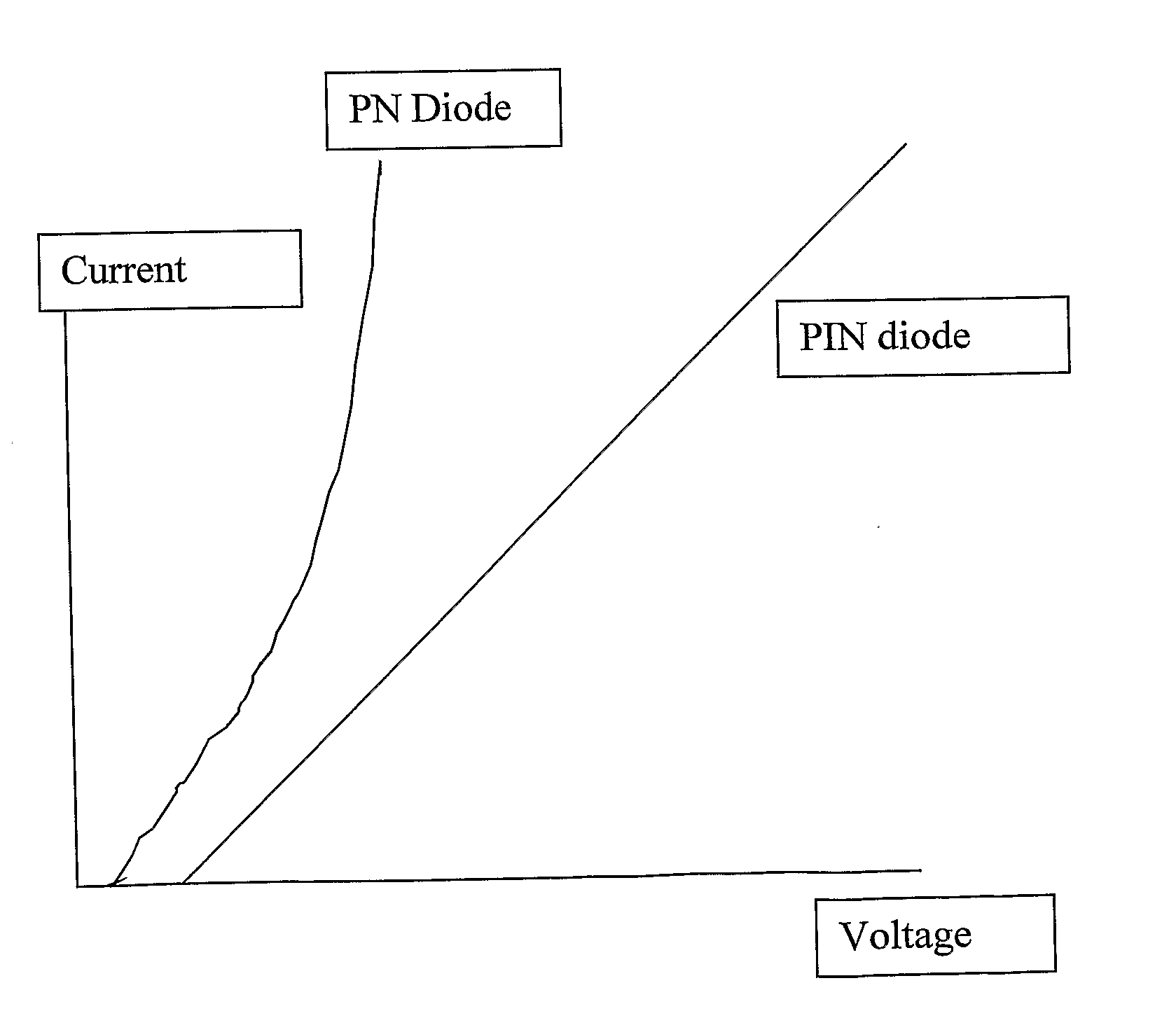Low Capacitance Transient Voltage Suppressor
a transient voltage suppressor, low capacitance technology, applied in the direction of diodes, semiconductor devices, electrical apparatus, etc., can solve the problems of power and therefore could be destroyed, damage or destroy severely electronic systems, damage to voltage spikes, etc., to achieve the effect of low capacitan
- Summary
- Abstract
- Description
- Claims
- Application Information
AI Technical Summary
Benefits of technology
Problems solved by technology
Method used
Image
Examples
Embodiment Construction
[0018]FIG. 1 shows the construction of a PN diode 10 where the P-type region 11 is in direct contact with the N-type region 12 within the semiconductor material 14. This contact is called the PN junction 13 where the junction 13 controls much of the electrical performance of the resulting device. The theory of the PN junction 13 and the manufacturing technology for such PN diodes 10 is well known and well established with many variations possible. The limitation to PN diodes 10 is that the area of such a device must be increased to increase the ability for that PN diode 10 to absorb power, which is critical in transient voltage suppressors. Increasing the area of a PN diode 10 also increases the capacitance associated with that diode.
[0019]FIG. 2 shows the more complex structure of a PIN diode 20 where the P-type region 11 is now in direct contact with an intrinsic region 21 while the N-type region 12 is also in contact with the opposite side of that intrinsic region 21. This struct...
PUM
 Login to View More
Login to View More Abstract
Description
Claims
Application Information
 Login to View More
Login to View More - R&D
- Intellectual Property
- Life Sciences
- Materials
- Tech Scout
- Unparalleled Data Quality
- Higher Quality Content
- 60% Fewer Hallucinations
Browse by: Latest US Patents, China's latest patents, Technical Efficacy Thesaurus, Application Domain, Technology Topic, Popular Technical Reports.
© 2025 PatSnap. All rights reserved.Legal|Privacy policy|Modern Slavery Act Transparency Statement|Sitemap|About US| Contact US: help@patsnap.com



